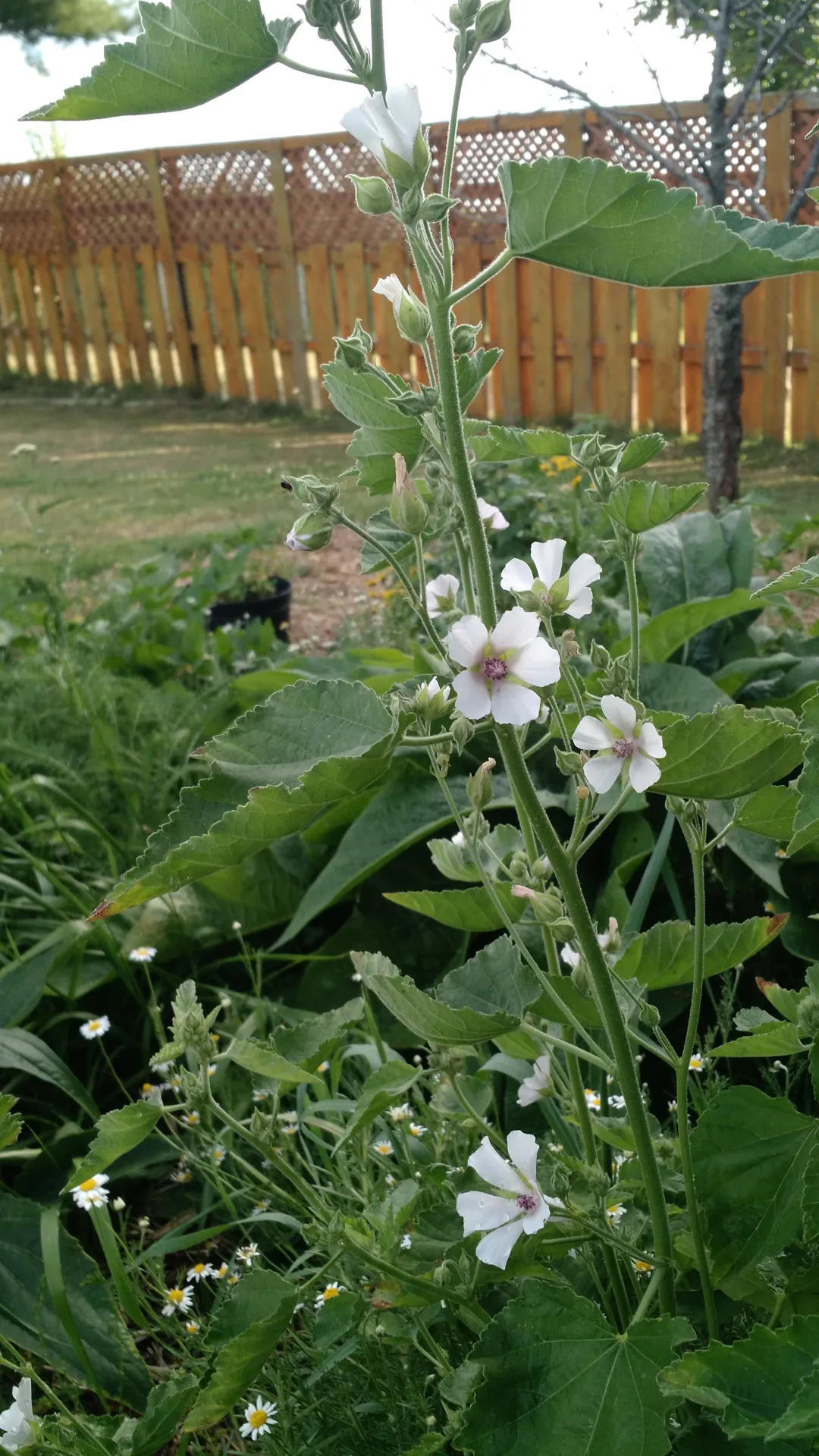
Marshmallow Herb – Althaea officinalis (a herbal materia medica)
My marshmallow plants are in full flower and their beauty inspired me to write about their medicine. While the root of the marshmallow plant is most familiar to people. today we will discuss the medicinal properties of the aerial parts of the plant.
Not everyone is comfortable with harvesting roots; the idea of killing an entire plant to use the root is something some folks would prefer to avoid. And from the practical point of view harvesting roots is also a lot of work! The ideal time to harvest roots is after the plant had died back (or as it’s dying back) so scouting out the location prior so you know where to look is vital.
Because the root is most often used my herbalists there isn’t a lot of information about the aerial parts of the plant. I’m happy to share what I’ve learned through school and the use of the plant.
Family:Malvaceae
Latin name:Althaea officinalis
Common names: marshmallow, marsh mallow, common marshmallow
Parts used: root (not discussed here) and aerial parts – top 25-30% of the plant harvested beginning to middle of it’s flowering season
Constituents: Mucilage (including a low molecular-weight D-glucan); flavonoids (such as kaempferol, quercetin, and diosmetin glucosides); scopoletin (a courmarin); polyphenolic acids (including syringic, caffeic, salicylic, vanillic, p-courmaric) 1
Description
Althaea is a perennial plant that can grow up to 4 feet (1.2 metres) in height producing a main stalk and a few lateral branches. The leaves which are oval and heart-shaped (oval-cordate) are approximately 2-3 inches long. Attached to stems via short petioles, the leaves are entire, irregularly toothed along the margin and soft and fuzzy on both sides.
Marshmallow’s five petaled flowers are pale in colour, ranging from white to pale pink. They contain both female and male organs (hermaphroditic) and are therefore self fertile. The bees in my garden seem to enjoy it immensely. Although often found in panicles, the flowers can sometimes form in the axils of the plant as well. The stamens unite into a tube and the anthers, often purple in colour, are kidney shaped.
I cannot express how glad I am that we mulched our garden as thoroughly and deeply as we did. Thanks to the hefty layer of straw covering every bed, we have been able to stretch our watering to every three days.
The earliest recorded use of marshmallow was that of a food consumed all over the world including Rome, Egypt, Syria, Greece and Armenia. The entire plant, especially the roots, are know for their mucilage and are quite demulcent.
Therapeutic Properties
Anticatarrhal, anti-inflammatory, antiulcerogenic, astringent, demulcent, diaphoretic, diuretic, emollient, expectorant, febrifuge, nervine, relaxant, peripheral vasodilator, tranquilizer, vulnerary
Contraindications
There are no know contraindications with the plant. Due to it’s demulcent nature it is wise to take marshmallow herb (root especially) half an hour away from medications as it can slow the absorption of them. This is most true if using the root of the plant.
Medicinal Uses of the Herb
Epithelial
Topical conditions (wounds, abrasions, bites, stings, rashes, cuts etc.)
Internal conditions
Inflammation of the eyes, inflammation of the vagina/cervix
Digestive System
Inflammatory conditions of the digestive tract
Mouth ulcers, sore throats, diarrhea, colitis, enteritis, gastric or duodenal ulcers
Urinary System
Inflammatory conditions of the urinary tract
Nephritis, cystitis, urethritis, urinary tract infections
Respiratory System
Upper respiratory (head colds, sinus infections)
Lower respiratory (bronchitis, irritating cough, respiratory catarrh)
References
Class Notes – Living Earth School
Earthwise Herbal, The – Matthew Wood
Holistic Herbal– David Hoffman
Medical Herbalism– David Hoffman 1
New Encylopedia of Herbs & Their Uses – Deni Bown
Way of Herbs, The– Michael Tierra
DISCLOSURE: In order for me to support myself and my herbal clinic, I may receive monetary compensation or other types of remuneration for my endorsement, recommendation, testimonial and/or link to any product or services from this blog. I truly appreciate all the support you have shown my blog and my business and I will only ever recommend products that I use myself, truly love or covet. Many thanks.










